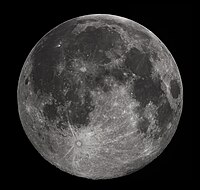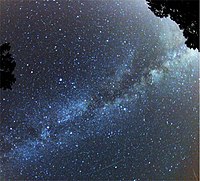
Equatorial ionospheric electrodynamics during solar flares
Sign Up to like & getrecommendations! Published in 2017 at "Geophysical Research Letters"
DOI: 10.1002/2017gl073238
Abstract: Previous investigations on ionospheric responses to solar flares focused mainly on the photoionization caused by the increased X-rays and extreme ultra-violet irradiance. However, little attention was paid to the related electrodynamics. In this letter, we… read more here.
Keywords: solar flares; equatorial ionospheric; electrodynamics; ionospheric electrodynamics ... See more keywords

Powerful Solar Flares in September 2017. Comparison with the Largest Flares in Cycle 24
Sign Up to like & getrecommendations! Published in 2018 at "Astrophysics"
DOI: 10.1007/s10511-018-9531-z
Abstract: Solar flare activity in cycle 24 is studied. Satellite observations of x-ray fluxes from GOES-15 and UV emission lines from the SDO/EVE experiment are used. The most powerful flares of cycle 24 in classes X9.3… read more here.
Keywords: ray range; powerful solar; solar flares; september 2017 ... See more keywords

Relation between solar flares and halo coronal mass ejections
Sign Up to like & getrecommendations! Published in 2019 at "Journal of Astrophysics and Astronomy"
DOI: 10.1007/s12036-018-9570-1
Abstract: Solar flares and coronal mass ejections (CMEs) are two very important active events from Sun. Inspite of several theoretical and statistical analyses, the relation between solar flares and CMEs is so far not well established,… read more here.
Keywords: coronal mass; mass ejections; solar flares; relation solar ... See more keywords

New classification parameter of solar flares based on the maximum flux in soft X-rays and on duration of flare
Sign Up to like & getrecommendations! Published in 2020 at "Journal of Astrophysics and Astronomy"
DOI: 10.1007/s12036-020-9623-0
Abstract: Solar flare activity is characterized by different classification systems, both in optical and X-ray ranges. The most generally accepted classifications of solar flares describe important parameters of flares such as the maximum of brightness of… read more here.
Keywords: new classification; solar flares; classification parameter; flare ... See more keywords

Quasi-periodic pulsations in hard X-rays of partially occulted solar flares
Sign Up to like & getrecommendations! Published in 2019 at "Advances in Space Research"
DOI: 10.1016/j.asr.2019.06.006
Abstract: Abstract We investigated solar flares partially occulted by the solar disk observed by the Yohkoh satellite. We found that about 30–40% of them show quasi-periodic pulsations (QPPs) in hard X-rays (HXR). A lack of usually… read more here.
Keywords: occulted solar; partially occulted; quasi periodic; periodic pulsations ... See more keywords

The 6 September 2017 X‐Class Solar Flares and Their Impacts on the Ionosphere, GNSS, and HF Radio Wave Propagation
Sign Up to like & getrecommendations! Published in 2018 at "Space Weather"
DOI: 10.1029/2018sw001932
Abstract: Abstract On 6 September 2017, the Sun emitted two significant solar flares (SFs). The first SF, classified X2.2, peaked at 09:10 UT. The second one, X9.3, which is the most intensive SF in the current… read more here.
Keywords: propagation; radio wave; class; radio ... See more keywords

Variations of TEC Over Iberian Peninsula in 2015 Due to Geomagnetic Storms and Solar Flares
Sign Up to like & getrecommendations! Published in 2020 at "Space Weather"
DOI: 10.1029/2020sw002516
Abstract: The total electron content (TEC) over the Iberian Peninsula was studied using data from two locations obtained both by Global Navigation Satellite System receivers and an ionosonde. The principal component analysis applied to the TEC… read more here.
Keywords: iberian peninsula; geomagnetic storms; solar flares; space weather ... See more keywords

Measurements and Modeling of the Responses of VLF Transmitter Signals to X‐Class Solar Flares at the Great Wall Station in Antarctica
Sign Up to like & getrecommendations! Published in 2023 at "Space Weather"
DOI: 10.1029/2022sw003249
Abstract: Solar flares can severely disturb the Earth's ionosphere, leading to changes of atmospheric chemistry and degradation of Global Navigation Satellite System (GNSS) signals. The key to better assess these effects is to more accurately quantify… read more here.
Keywords: solar flares; chemistry; great wall; class solar ... See more keywords

Ionospheric Effects of Solar Flares in September 2017 and an Evaluation of Their Influence on Errors in Navigation Measurements
Sign Up to like & getrecommendations! Published in 2020 at "Geomagnetism and Aeronomy"
DOI: 10.1134/s0016793220050138
Abstract: The manifestation of the most powerful flares of class X9.3 and X8.2 recorded on September 6 and 10, 2017, respectively, in the total electronic content (TEC) of the ionosphere, are analyzed. GPS observations at midlatitude… read more here.
Keywords: navigation measurements; errors navigation; solar flares; september 2017 ... See more keywords

Calculation of the Linear Polarization Degree of the Proton-Induced Hα Line Emission in Solar Flares
Sign Up to like & getrecommendations! Published in 2021 at "Astronomy Reports"
DOI: 10.1134/s1063772921040065
Abstract: This paper presents an original analytical calculation of the linear polarization degree of Hα lines caused by anisotropic protons during solar flares, when the temperature of thermal protons in the solar chromosphere is higher than… read more here.
Keywords: protons solar; polarization degree; linear polarization; solar flares ... See more keywords

Thermal instability of a reconnecting current layer as a trigger for solar flares
Sign Up to like & getrecommendations! Published in 2017 at "Journal of Experimental and Theoretical Physics"
DOI: 10.1134/s1063776117070214
Abstract: The stability of small perturbations of a reconnecting current layer (CL) in a plasma with a strong magnetic field has been investigated in the approximation of dissipative magnetohydrodynamics. The case where the wavevector of the… read more here.
Keywords: instability; reconnecting current; solar flares; thermal instability ... See more keywords